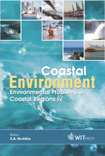Detailed Observation Of Water Level Variation At The Mouth Of Natori River, Japan
Price
Free (open access)
Transaction
Volume
58
Pages
Published
2002
Size
512 kb
Paper DOI
10.2495/CENV020251
Copyright
WIT Press
Author(s)
K Watanabe, H Tanaka & H Yamaji
Abstract
In the present study, detailed measurement of water level variation is carried at the Natori River mouth in Miyagi Prefecture, Japan to find quantitative relationship between water level variation and river mouth morphology. For this purpose, the water level is measured with the interval of one minute, whereas conventional measurement system obtains data every one hour in general. It is observed that the water level inside and outside the river mouth shows distinct difference after the formation of sand spit at the river entrance, although the difference is not so remarkable after complete flushing of the spit during a flood. 1 Introduction Water level variation in a river is commonly measured every one hour in general. Since the time-variation water level in a river is not so rapid except a period of flood, the measurement interval of one hour might be enough for practical purposes. Even during a flood, one-hour interval is normally sufficient for detecting the shape of hydrograph. At a river mouth also, it is recommended to obtain water level data every one hour [l]. It is noted, however, that there exist different time scale at a river mouth, characterized by tidal motion. Therefore, it might be plausible to assume that there might be a measurement interval of water level which should be specially used in a river entrance, being different from one used in upper or middle reach in a river system. One of the authors has shown that the water level variation in a river mouth can be used for estimating river mouth morphology (Tanaka and Ito [2]). Thus, it is supposed that the water level measurement is more detailed, the information of river mouth morphology detected from the water level data will
Keywords





